Hatsumode” is a Japanese event held at the beginning of the year. Just looking at the lively and bustling atmosphere of shrines and temples is a joy to behold. However, there are probably few people who can explain exactly why Japanese people go to Hatsumode.
In this article, we will introduce the reasons why people go to Hatsumode, the manners and taboos of Hatsumode, and popular Hatsumode spots.
What is Hatsumode? Reasons to make a New Year’s visit
New Year’s is one of the most important events for Japanese people. It is a day that makes us feel light-hearted and even gives us a new start.
Many people go back to their hometowns, and it is a privilege of the New Year to be able to spend more time relaxing than usual. Many Japanese people say that New Year’s Day is their favorite time of the year. Originally, Oshogatsu was an important event to connect people with the gods, and each custom practiced during Oshogatsu has its own meaning and origin.
For example, Kagamimochi (mirror rice cakes) have the meaning of a boundary, and are said to be the highest quality offerings to the gods. The kadomatsu is a landmark for these gods to enter the house, and the shimenawa is a symbol of the Shinto shrine, an important symbol of the welcoming spirit. There are many other traditions, so it would be fun to look into them one by one to see the regional differences.
When the New Year arrives, many Japanese people visit shrines and temples to pay their respects. However, do you know what this “Hatsumode” is for in the first place? It is said that the custom of Hatsumode has been rooted in people since the Edo period (1603-1868). Originally, the term “Hatsumode” was used to describe a visit to the nearest shrine or temple from one’s home, but now it has come to mean a visit to a shrine or temple at the beginning of the New Year itself.
Hatsu-mode has such a long history. This year, why don’t you wear a kimono, the formal attire of the Japanese people, for Hatsumode?
Kimono for Hatsumode is not a formal kimono such as Tomesode, but a casual kimono made of cotton or wool. Recently, there are kimonos that can be washed at home and are easy to care for. If you are a kimono beginner, it is recommended that you prepare such a kimono. Also, if you are an unmarried woman, a furisode kimono would be wonderful.
Many people wear shawls or coats over their kimonos when it is cold, but it is known to be proper etiquette to take them off indoors. To protect yourself from the cold, it is best to wear inner wear wisely, and if possible, wear less clothing on top. Wool is recommended for its warmth.
Popular New Year’s Greeting Spots
Let’s take a look at some of the most popular Hatsumode (New Year’s visit) spots in Japan that are now popular with many people.
Meiji Shrine
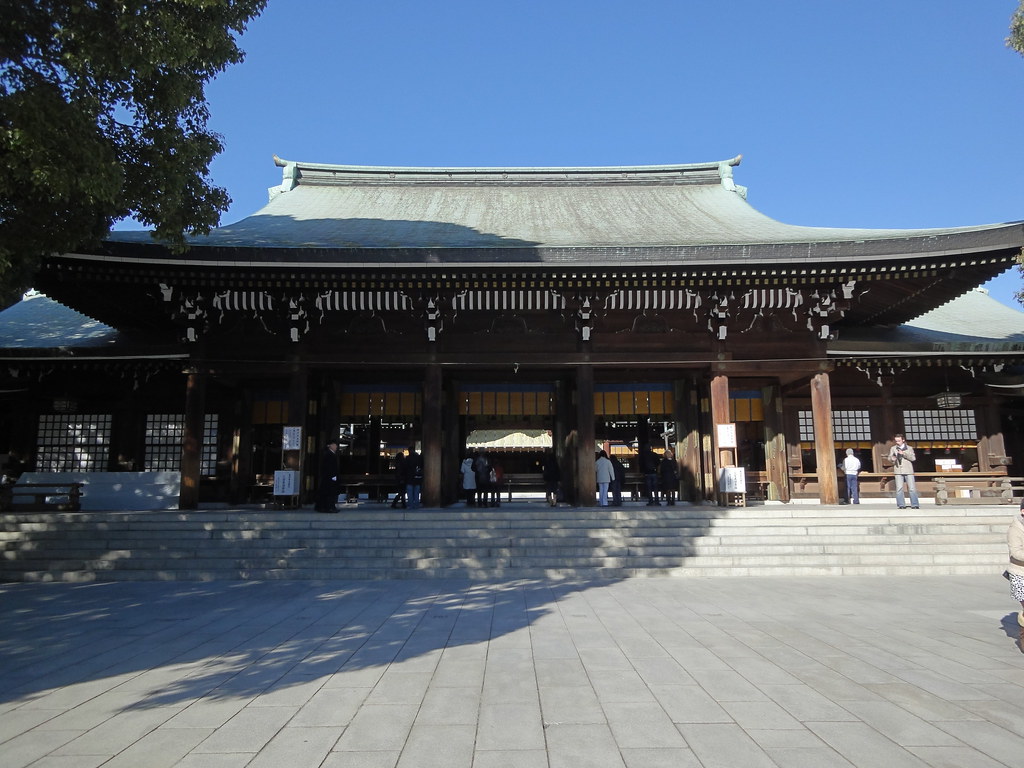
The first place I’d like to introduce is Meiji Shrine, located in Shibuya Ward, Tokyo. It is the most popular New Year’s visit spot in Japan, with the largest number of visitors every year. It is said that more than 30,000 people visit the shrine on the first three days of the New Year, and it is crowded with people every year. Although it is located not far from JR Harajuku Station, there are so many trees on the grounds that you will forget you are in Tokyo, and the area is filled with rich nature. During the New Year’s visit, there are many food stalls, and you can enjoy just looking at them. In the first week after the first three days of the New Year, there is a festival such as the first Yokozuna ring-entering ceremony of the Grand Sumo Tournament, so if you are interested, please come and visit.
After the Hatsumode, why not enjoy shopping in Harajuku and indulge in the latest gourmet delights in Omotesando? Whether you are visiting with your family or on a date, the vibrant atmosphere of the city will make your heart bright and cheerful.
Fushimi Inari Taisha Shrine
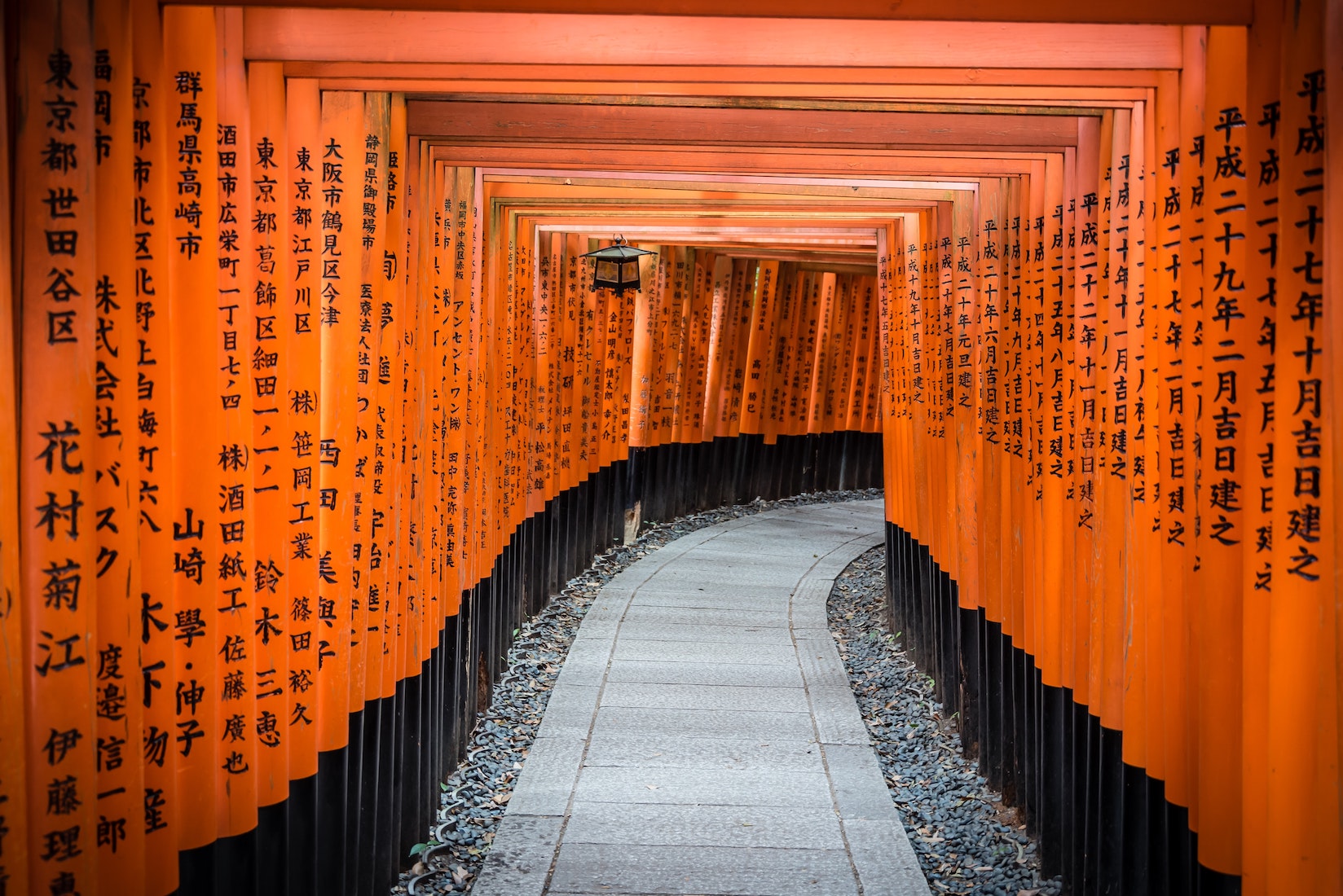
Next up is Fushimi Inari Taisha Shrine, located in Fushimi-ku, Kyoto City, Kyoto Prefecture. Fushimi Inari-taisha is known as one of the most popular sightseeing spots in Kyoto, and many people have probably seen the rows of vermilion torii gates. The main attraction of Fushimi Inari-taisha is the Senbon Torii gate. It is said that this area is the entrance to a mountain known as the “descending land” where the gods come down, and that this torii gate was built as a gate leading from this world to the “ghost world” where the gods exist.
It is said that this torii gate was built as a gate leading from the present world to the “ghost world” where the gods reside. It is surprising to know that two to three of these gates are rebuilt every day due to deterioration. On the first three days of the New Year, Fushimi Inari-taisha Shrine is open all day, and the number of visitors is estimated at 2.7 million.
One of the reasons for the popularity of Fushimi Inari Taisha is that it is only a 3-minute walk from Inari Station, the closest station to the shrine. We recommend that you visit the shrine when there are as few people as possible, as it is expected to be quite crowded. Otherwise, it will be difficult to even get out of the station. Fushimi Inari-taisha Shrine is known for its Inari-san, but it is also famous for its very cute fox-shaped ema (votive picture tablet). Why don’t you write down your goals and wishes at the beginning of the year?
Sumiyoshi-taisha Shrine
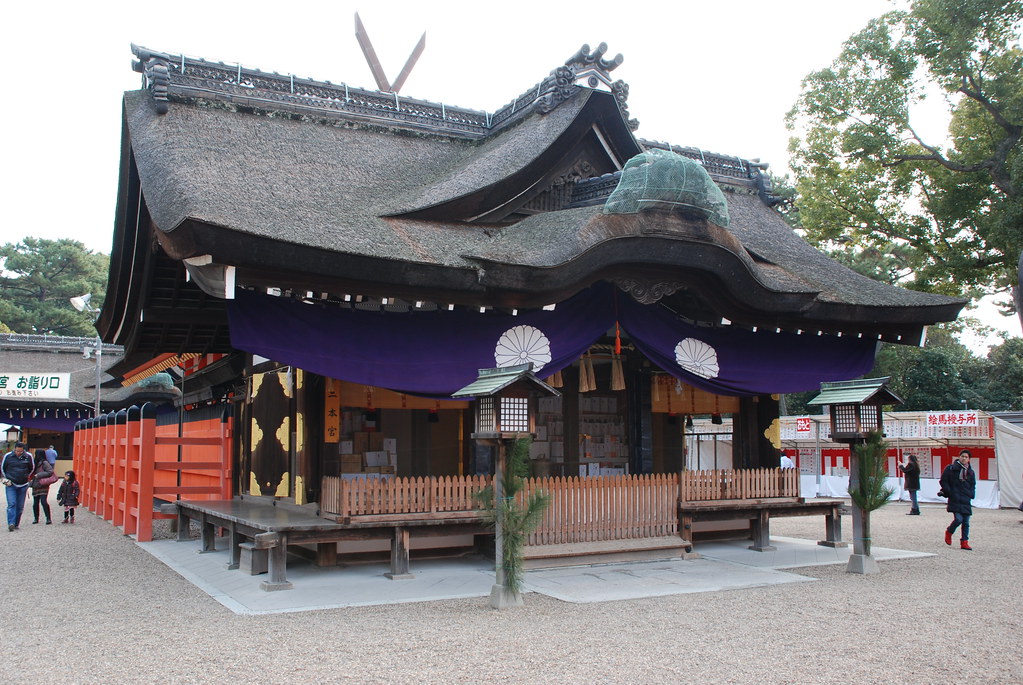
The next stop is Sumiyoshi-taisha Shrine in Sumiyoshi-ku, Osaka City, Osaka Prefecture. Sumiyoshi-taisha is the headquarters of the 2,300 Sumiyoshi shrines in Japan. It is also known as a power spot in Osaka and is one of the most popular tourist destinations. On the first three days of the New Year’s holiday, about 2 million people visit the shrine, making it a very popular spot for New Year’s visits. At night, the bridge is beautifully lit up, and the view is so spectacular that it has been selected as one of the 100 best night views in Kansai.
It is said that there are relatively few people at Sumiyoshi Taisha after 4:00 p.m., even on the three New Year’s days. The festival that attracts even more people is the one held on the 4th and later, when red and white rice cakes are served at the “stepping song ritual” to pray for a good harvest. In the “White Horse Ceremony”, you can see white horses galloping around, and it’s a sight to behold. It is said that anyone who sees the horse will have good health for the rest of the year, so if you don’t mind visiting on the three New Year’s days, it is a good idea.
Tsuruoka Hachimangu Shrine
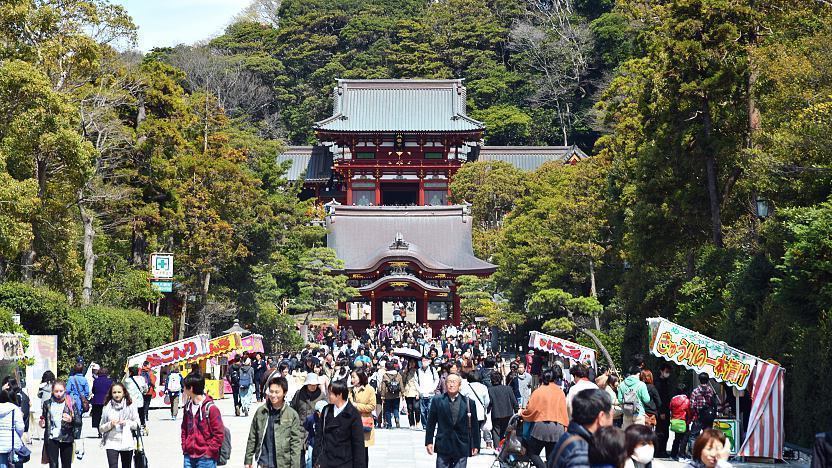
The next stop is Tsurugaoka Hachimangu Shrine, located in Kamakura City, Kanagawa Prefecture, another popular tourist destination. It is located not far from Kamakura Station, just past Komachi Street, which is crowded with small stores, general stores, and souvenir shops. The beautiful scenery is sure to capture the hearts of all who see it. On the first three days of the New Year, about 2.5 million people come to pay their respects to Tsurugaoka Hachimangu Shrine, praying for good luck, safety in the home, protection from bad luck, and marriage.
After the Hatsumode, it is fun to enjoy the streets of Kamakura and take a short stroll to Enoshima Island and other places. It can get very windy and cold along the coast, so be sure to take warm clothes when you visit.
Notes on Hatsumode
Although all of the spots mentioned here attract many people, there are times when the crowds are smaller, such as early in the day or on January 2. In general, the most crowded time for Hatsumode is midnight between New Year’s Eve and New Year’s Day, when many rituals are held. A smooth visit to the shrine is never possible, but if you want to savor the New Year’s Eve on the grounds, it is recommended to start your visit around 7:00. It seems that you will hardly be able to enter the grounds two hours before New Year’s Day, so line up as early as possible.
Also, even though there will be a lot of people there that day, it is expected to be very cold. Make sure you are prepared for the cold and are in good physical condition for the Hatsumode. In addition, it is generally considered difficult to visit the shrine by car during Hatsumode.
During New Year’s Eve and the first three days of the New Year, public transportation is often operated on special schedules, and the last train may run later than usual. If you are planning to visit the shrine from far away, please be careful.
Why don’t you join us for your first visit?

On January 8, F2L Academy will hold a Hatsumode (New Year’s visit) at Sakurada Shrine in Tokyo. A Japanese person will give a free lecture on etiquette to those who are attending the Hatsumode for the first time.
After the New Year’s visit, we will meet at F2l’s office in Roppongi to mingle over a glass of Hot Plum Wine and a non-alcoholic drink, Hot Ama zake.
It’s free of charge, so please feel free to join us!
To register, please click below
https://forms.gle/zWKA4MyaBz1rtroz5

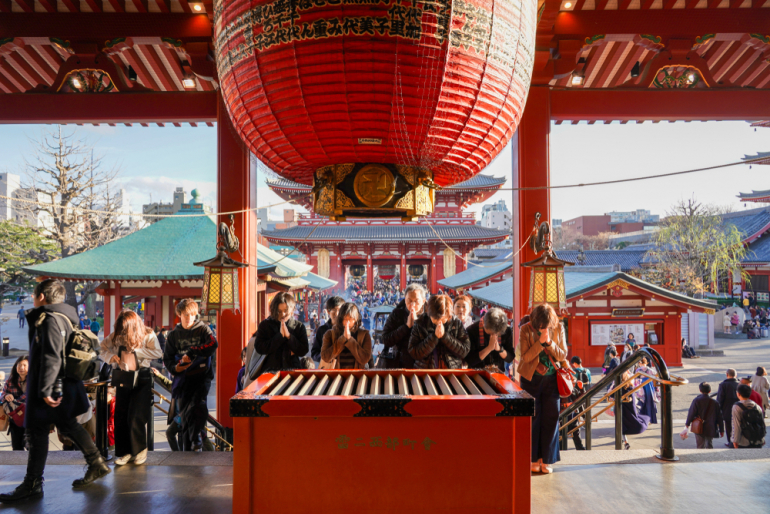
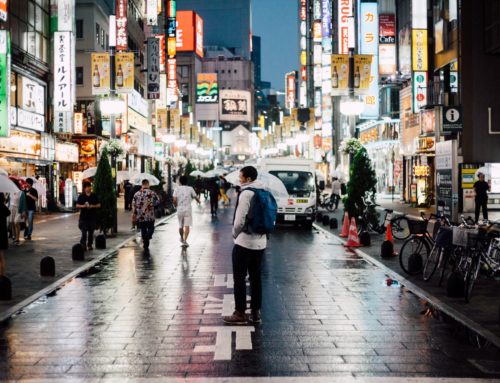

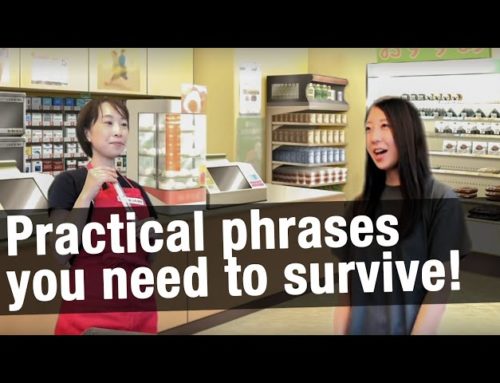


Leave A Comment